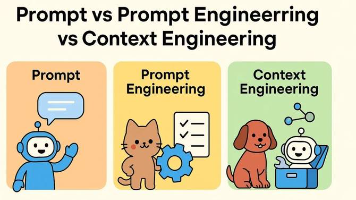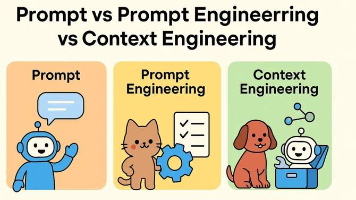FFmpeg的“超能力”:C#多媒体教学的“瑞士军刀”
FFmpeg是C#多媒体教学的‘瑞士军刀’,它不仅是一组工具,更是一种思维模式的革新。从简单的视频转码到复杂的流媒体处理,从硬件加速到AI融合——每一个FFmpeg命令都是一次对多媒体本质的探索。当学生学会用FFmpeg的镜头语言诠释代码时,C#的课堂就变成了创造的舞台。
·
一、FFmpeg与C#的“化学反应”:为何是教学利器?
1.1 FFmpeg的核心优势
- 跨平台性:支持Windows、Linux、macOS,适配C#的跨平台生态(.NET Core/.NET 5+)。
- 功能全面:涵盖编解码、流媒体、滤镜、硬件加速等多媒体处理需求。
- 命令行与API并存:既可通过调用命令行实现快速原型,也可通过库集成(如FFmpeg.AutoGen)构建复杂应用。
1.2 C#教学的痛点与FFmpeg的救赎
| 教学痛点 | FFmpeg解决方案 |
|---|---|
| 多媒体处理代码复杂 | 通过FFmpeg命令行简化实现 |
| 学生难以理解底层逻辑 | 利用FFmpeg的封装/解封装流程教学 |
| 项目实践缺乏趣味性 | 结合滤镜、流媒体等实战案例 |
二、FFmpeg与C#的“初吻”:调用命令行的魔法
2.1 调用FFmpeg命令行的基础代码
// 调用FFmpeg命令行示例:视频转码
public static void ConvertVideo()
{
string ffmpegPath = @"C:\ffmpeg\bin\ffmpeg.exe"; // FFmpeg可执行文件路径
string input = "input.mp4";
string output = "output.avi";
// 构建FFmpeg命令
string arguments = $"-i {input} -c:v libx264 -preset fast -crf 23 -c:a aac {output}";
// 创建进程启动信息
ProcessStartInfo startInfo = new ProcessStartInfo
{
FileName = ffmpegPath,
Arguments = arguments,
RedirectStandardOutput = true,
RedirectStandardError = true,
UseShellExecute = false,
CreateNoWindow = true
};
// 启动进程并等待完成
using (Process process = new Process { StartInfo = startInfo })
{
process.Start();
string outputData = process.StandardOutput.ReadToEnd();
string errorData = process.StandardError.ReadToEnd();
process.WaitForExit();
// 输出日志(教学中可展示给学生)
Console.WriteLine("FFmpeg Output:");
Console.WriteLine(outputData);
Console.WriteLine("FFmpeg Error:");
Console.WriteLine(errorData);
}
}
代码注释详解:
- 命令行参数:
-i input.mp4:指定输入文件。-c:v libx264:使用H.264编码视频。-preset fast:设置编码速度。-crf 23:控制视频质量(值越小质量越高)。-c:a aac:使用AAC编码音频。output.avi:输出文件名。
- 进程管理:
RedirectStandardOutput和RedirectStandardError用于捕获FFmpeg的输出日志,便于教学调试。UseShellExecute = false避免弹出命令行窗口,保持界面整洁。
三、FFmpeg的“瑞士军刀”:C#教学中的实战案例
3.1 视频转码与C#的“交响曲”
3.1.1 批量转码脚本
// 批量转码MP4到AVI
public static void BatchConvert(string sourceDir, string targetDir)
{
if (!Directory.Exists(targetDir)) Directory.CreateDirectory(targetDir);
foreach (string file in Directory.GetFiles(sourceDir, "*.mp4"))
{
string input = file;
string output = Path.Combine(targetDir, Path.GetFileNameWithoutExtension(file) + ".avi");
string arguments = $"-i {input} -c:v libx264 -preset fast -crf 23 -c:a aac {output}";
RunFFmpeg(ffmpegPath, arguments);
}
}
// 通用FFmpeg调用方法
private static void RunFFmpeg(string ffmpegPath, string arguments)
{
ProcessStartInfo startInfo = new ProcessStartInfo
{
FileName = ffmpegPath,
Arguments = arguments,
RedirectStandardOutput = true,
RedirectStandardError = true,
UseShellExecute = false,
CreateNoWindow = true
};
using (Process process = new Process { StartInfo = startInfo })
{
process.Start();
process.WaitForExit();
}
}
教学价值:
- 文件操作:结合C#的目录遍历和文件操作,展示完整的批量处理流程。
- 异常处理:可扩展添加错误日志记录,提升代码健壮性。
3.2 滤镜链的“魔法秀”:添加水印与缩放
3.2.1 添加水印的C#封装
// 为视频添加水印
public static void AddWatermark()
{
string input = "input.mp4";
string watermark = "watermark.png";
string output = "output_watermarked.mp4";
// 构建滤镜链:缩放+水印叠加
string filterComplex = $"scale=1280:720, overlay=W-w-10:H-h-10";
string arguments = $"-i {input} -i {watermark} -filter_complex \"{filterComplex}\" {output}";
RunFFmpeg(ffmpegPath, arguments);
}
代码注释详解:
scale=1280:720:缩放视频到指定分辨率。overlay=W-w-10:H-h-10:将水印叠加到右下角(W/w为视频/水印宽度,H/h为高度)。- 滤镜链的组合能力是FFmpeg的核心优势之一。
3.3 流媒体处理的“实时秀”:RTMP推流
3.3.1 推流到RTMP服务器
// 将本地视频推流到RTMP服务器
public static void PushToRTMP()
{
string input = "input.mp4";
string rtmpUrl = "rtmp://your.rtmp.server/app/stream";
// 设置推流参数
string arguments = $"-re -i {input} -c:v h264 -preset fast -g 25 -f flv {rtmpUrl}";
RunFFmpeg(ffmpegPath, arguments);
}
代码注释详解:
-re:以原始帧率读取输入(用于模拟实时流)。-f flv:指定输出格式为FLV(RTMP协议要求)。- 教学中可结合OBS Studio等工具验证推流效果。
四、FFmpeg的“高级魔法”:C#与硬件加速的融合
4.1 硬件加速转码的“速度革命”
// 使用NVIDIA GPU硬件加速转码
public static void HardwareAcceleratedTranscoding()
{
string input = "input.mp4";
string output = "output_hardware.mp4";
// 使用CUDA硬件加速
string arguments = $"-i {input} -c:v h264_nvenc -preset fast -crf 23 {output}";
RunFFmpeg(ffmpegPath, arguments);
}
技术解析:
h264_nvenc:NVIDIA GPU的H.264编码器。- 硬件加速可显著降低CPU负载,提升转码效率(适合大型项目教学)。
4.2 FFmpeg.AutoGen:C#的“原生接入”
// 使用FFmpeg.AutoGen库调用FFmpeg API
[DllImport("avcodec-59.dll")]
private static extern int avcodec_open2(IntPtr codec_ctx, AVCodec* codec, IntPtr options);
// 初始化FFmpeg库
public static void InitializeFFmpeg()
{
ffmpeg.avformat_network_init();
ffmpeg.avcodec_register_all();
}
// 解码视频帧(简化示例)
public static void DecodeVideo(string inputPath)
{
AVFormatContext* formatContext = null;
ffmpeg.avformat_open_input(&formatContext, inputPath, null, null);
ffmpeg.avformat_find_stream_info(formatContext, null);
// 查找视频流
int videoStreamIndex = -1;
for (int i = 0; i < formatContext->nb_streams; i++)
{
if (formatContext->streams[i]->codecpar->codec_type == AVMediaType.AVMEDIA_TYPE_VIDEO)
{
videoStreamIndex = i;
break;
}
}
// 获取解码器
AVCodecParameters* codecParams = formatContext->streams[videoStreamIndex]->codecpar;
AVCodec* codec = ffmpeg.avcodec_find_decoder(codecParams->codec_id);
AVCodecContext* codecContext = ffmpeg.avcodec_alloc_context3(codec);
ffmpeg.avcodec_parameters_to_context(codecContext, codecParams);
avcodec_open2(codecContext, codec, null);
// 解码逻辑(需补充完整)
// ...
}
教学价值:
- 底层API调用:让学生理解FFmpeg的工作原理(如解封装、解码流程)。
- 性能优化:适合高阶教学,探讨多媒体处理的性能瓶颈。
五、FFmpeg的“终极形态”:C#教学的创新实验
5.1 实时滤镜链的“动态秀”
// 实时调整视频亮度和对比度
public static void RealTimeFiltering()
{
string input = "input.mp4";
string output = "output_filtered.mp4";
string filterComplex = "eq=brightness=1.2:contrast=1.5";
string arguments = $"-i {input} -filter_complex \"{filterComplex}\" {output}";
RunFFmpeg(ffmpegPath, arguments);
}
技术扩展:
eq滤镜:调整亮度(brightness)、对比度(contrast)、饱和度(saturation)。- 可结合GUI控件(如WPF Slider)实现交互式滤镜调整。
5.2 多路流媒体的“编排秀”
// 合并多个视频流为一个输出
public static void MergeMultipleStreams()
{
string input1 = "video1.mp4";
string input2 = "video2.mp4";
string output = "merged_output.mp4";
// 使用concat滤镜横向拼接
string filterComplex = "hstack=inputs=2";
string arguments = $"-i {input1} -i {input2} -filter_complex \"{filterComplex}\" {output}";
RunFFmpeg(ffmpegPath, arguments);
}
教学场景:
- 多路视频拼接:适用于监控系统或直播场景的教学演示。
- 滤镜链组合:可扩展添加更多滤镜(如
vstack垂直拼接)。
六、FFmpeg的“安全防御”:C#教学的注意事项
6.1 输入验证的“防火墙”
// 防止恶意输入导致FFmpeg命令注入
public static void SafeRunFFmpeg(string userInput)
{
if (string.IsNullOrEmpty(userInput))
throw new ArgumentException("输入不能为空");
// 白名单验证:仅允许字母、数字和下划线
if (!Regex.IsMatch(userInput, @"^[a-zA-Z0-9_]+$"))
throw new ArgumentException("输入包含非法字符");
// 使用参数化方式构建命令(如通过文件列表)
string arguments = $"-i {userInput} -c copy output.mp4";
RunFFmpeg(ffmpegPath, arguments);
}
安全原则:
- 白名单过滤:避免用户输入中包含特殊字符(如
;,|)。 - 参数化构建:优先使用文件列表而非直接拼接命令。
6.2 错误处理的“容错机制”
// 捕获FFmpeg的错误输出并记录
private static void RunFFmpegWithLogging(string ffmpegPath, string arguments)
{
ProcessStartInfo startInfo = new ProcessStartInfo
{
FileName = ffmpegPath,
Arguments = arguments,
RedirectStandardOutput = true,
RedirectStandardError = true,
UseShellExecute = false,
CreateNoWindow = true
};
using (Process process = new Process { StartInfo = startInfo })
{
process.OutputDataReceived += (sender, e) =>
File.AppendAllText("ffmpeg_output.log", e.Data + Environment.NewLine);
process.ErrorDataReceived += (sender, e) =>
File.AppendAllText("ffmpeg_error.log", e.Data + Environment.NewLine);
process.Start();
process.BeginOutputReadLine();
process.BeginErrorReadLine();
process.WaitForExit();
}
}
教学意义:
- 日志记录:帮助学生理解FFmpeg的执行过程。
- 错误分析:通过日志定位问题(如编码器不支持)。
七、FFmpeg的“未来战场”:C#教学的拓展方向
7.1 AI驱动的多媒体处理
// 使用FFmpeg与AI模型结合(示例:调用外部AI服务)
public static void AIEnhancedProcessing()
{
// 1. 使用FFmpeg提取关键帧
string extractKeyframes = "-i input.mp4 -vf select='key' -vsync vfr keyframes/frame%04d.png";
RunFFmpeg(ffmpegPath, extractKeyframes);
// 2. 调用AI服务处理关键帧(伪代码)
List<string> processedFrames = AIProcessFrames("keyframes/");
// 3. 合并处理后的帧为视频
string mergeFrames = "-framerate 24 -i keyframes/frame%04d_processed.png output_ai.mp4";
RunFFmpeg(ffmpegPath, mergeFrames);
}
前沿方向:
- AI滤镜:结合深度学习模型(如StyleGAN)生成特效。
- 自动化剪辑:通过AI分析视频内容并自动剪辑。
7.2 云原生与FFmpeg的融合
// 云存储中视频的批量处理(伪代码)
public static void CloudBasedProcessing()
{
// 1. 从Azure Blob Storage下载视频
DownloadFromBlob("input.mp4");
// 2. 使用FFmpeg处理
RunFFmpeg(ffmpegPath, "-i input.mp4 -c:v libx265 output_hevc.mp4");
// 3. 上传到云存储
UploadToBlob("output_hevc.mp4");
}
技术趋势:
- Serverless架构:将FFmpeg任务部署为无服务器函数。
- 分布式处理:利用Kubernetes调度大规模转码任务。
八、 FFmpeg的“教学哲学”与C#的“共生之道”
“FFmpeg是C#多媒体教学的‘瑞士军刀’,它不仅是一组工具,更是一种思维模式的革新。从简单的视频转码到复杂的流媒体处理,从硬件加速到AI融合——每一个FFmpeg命令都是一次对多媒体本质的探索。当学生学会用FFmpeg的镜头语言诠释代码时,C#的课堂就变成了创造的舞台。”
FFmpeg与C#教学的“实战路线图”
| 阶段 | 教学目标 | 技术栈 | 示例项目 |
|---|---|---|---|
| 基础阶段 | 掌握FFmpeg命令行调用 | C# + FFmpeg | 视频转码器 |
| 进阶阶段 | 理解滤镜链与流媒体 | C# + FFmpeg.AutoGen | 实时滤镜应用 |
| 高阶阶段 | 开发多媒体处理应用 | C# + WPF + FFmpeg | 多路视频拼接器 |
| 创新阶段 | 结合AI与云原生 | C# + Azure + FFmpeg | AI视频增强平台 |
终极建议:
- 从简单命令行调用开始,逐步深入FFmpeg的API。
- 在教学中结合实际案例(如学生作品剪辑、直播推流)提升兴趣。
- 鼓励学生探索FFmpeg的开源代码,理解多媒体处理的底层逻辑。
更多推荐
 已为社区贡献17条内容
已为社区贡献17条内容









所有评论(0)